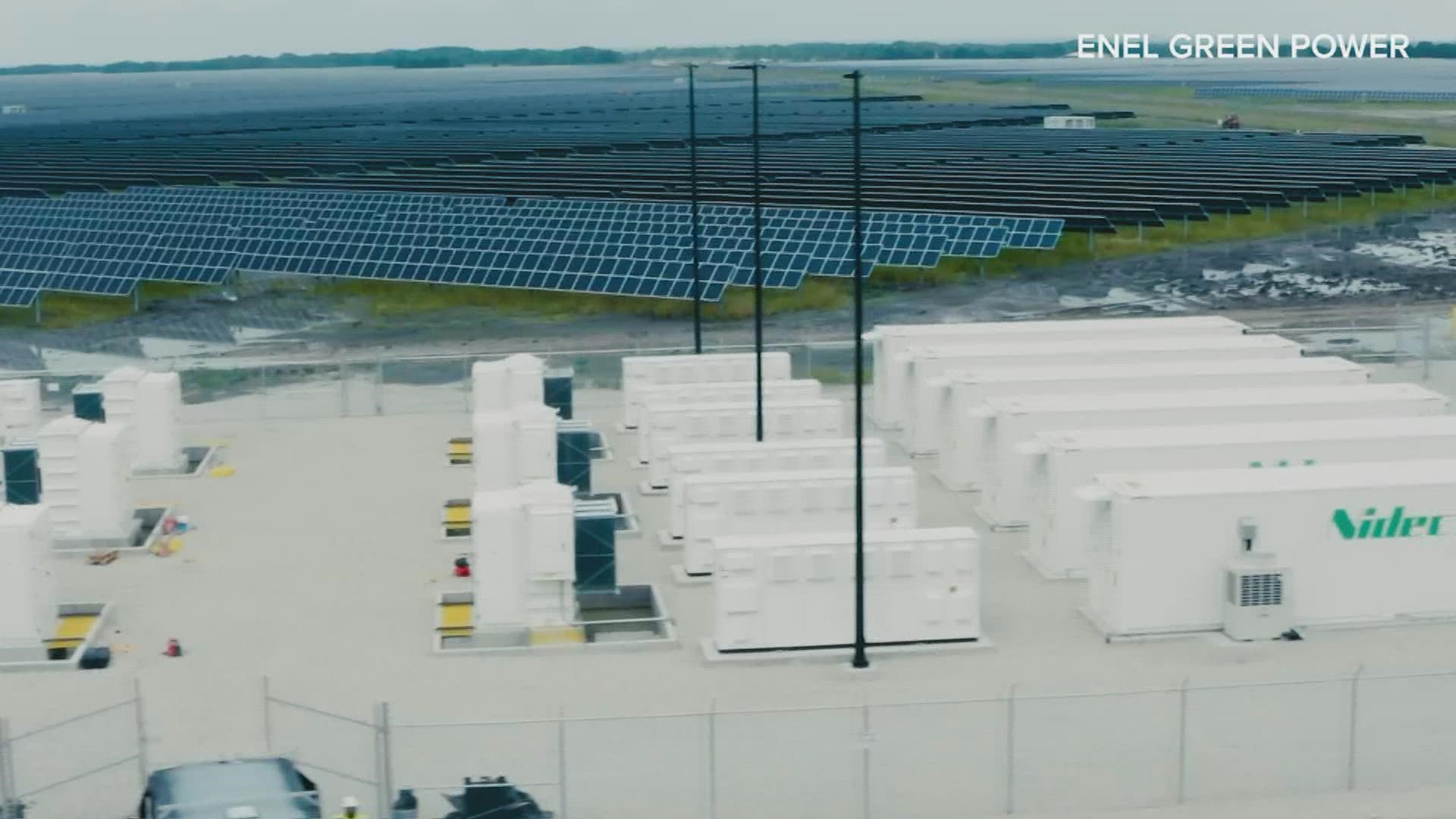KAUFMAN COUNTY, Texas — While mother nature can make cheap and clean electricity, she doesn’t come with a switch we can control. The sun doesn’t always shine and the wind doesn’t always blow.
But the issue of intermittency has one promising solution.
“Battery storage is something that is going to be a game changer,” said Clark Bixler, senior development manager for Enel Green Power.
Enel is part of the changing landscape of the Texas power grid. In rural Kaufman County southeast of Dallas, its 1400-acre solar farm not only harnesses the sun’s energy but stores it too.
“This plant can deploy energy at any given time of day, not just when the sun is shining.”
The thousands of solar arrays are connected to two dozen storage containers each with about 500 lithium-ion batteries inside.
“When they're fully charged, it will take about an hour and a half to totally discharge all the energy onto the grid,” said operations and maintenance site manager Alfonso Reyes.
The project can store and discharge 50 megawatts of electricity, enough to power more than 10,000 homes. It’s a boost of juice available when the ERCOT grid is running low.
“Battery storage can bridge the gap when other generators go down,” Bixler said.
“The battery storage can supply that energy until those generators can come back online.”
There was hardly any battery storage in Texas just a few years ago. In 2019, there was only 104 megawatts in the entire grid. By 2022, it’s estimated to hit 2,831 megawatts. The increase was spurred by technology improvements and falling prices.
“The cost of storage is coming down dramatically because we all use iPhones or starting to drive electric cars and that drives down the cost of batteries,” said Michael Skelly, a longtime Texas renewable energy businessman and currently the CEO of Grid United.
“That's exactly why you're seeing more storage is because the cost is really a fraction of what it was just five years ago,” Skelly said.
Battery storage is not only “hybrid” or paired with wind and solar farms, developers are building “stand alone” projects. They buy power directly from the grid when prices are low, then store and sell it back to the grid when prices are high.
“Like the middle of the night when we're not using that much power, those batteries get charged up,” Skelly said.
“And then during the afternoon hours of say 3pm to 6pm when electricity demand peaks, they discharge power back into the grid.”
The biggest challenge is how long grid-scale batteries can last. Currently, the storage limit is four to six hours. The holy grail in the energy world is to develop a battery that can store and discharge power for days.

